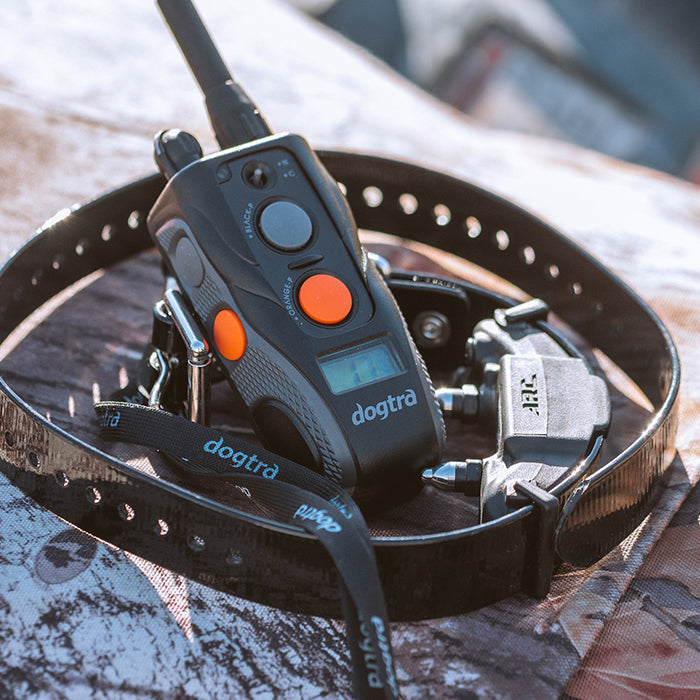USEFUL TRAINING TOOL OR LAST RESORT: WHAT DOES AN E-COLLAR DO?

Next time you’re in a social setting and you need a conversation starter, bring up the topic of dogs and remote collar training. :-) I’m willing to bet things get interesting pretty quickly. It’s just one of those topics that tend to be polarizing. People have strong reactions on all sides of the conversation.
The categories of thought range from those who vow they would never use a remote collar, to those who use it routinely in their dog training. There is also the in-between group of people that classify the tool as one of last resort.
The idea of a remote collar being a last resort is the one I want to mull over with you for a few paragraphs today.
What Does an E-Collar Do?
An E-collar, also known as a remote collar, is a training tool that uses a mild electric stimulus to communicate with a dog. When used correctly, the E-collar provides a sensation that can range from a mild tingle to a slight tap, depending on the level of intensity. Some people believe that it is an inhumane device that should only be used as a last resort for misbehaved dogs, while others see it as a valuable training tool. The truth is, when used correctly, an E-collar can be a humane and effective way to train a dog.
Useful Training Tool or a Last Resort?
The last resort concept is held by those that feel using an e-collar is acceptable only after all other tools and techniques have been exhausted to no avail.
From my vantage point as a trainer, very knowledgeable and confident in using a remote collar, I don’t quite understand this philosophy. If you know that something is ultimately going to be effective and solve the problem, why would you not chose to start with effectiveness? Why delay employing an effective solution?
Speaking for myself, if I hired a professional to fix an issue, I’d want to know all of my options for fixing the problem. I’d want to know the time and expense involved in utilizing each of those various solutions. I’d much prefer that information all up front rather than someone taking the approach of attempting option A, then if that doesn’t work attempt option B, and then on to C and so on up the proverbial “strength of tools” ladder. That way of problem solving may not be the most time or cost effective and is likely to create a good deal of frustration. It certainly would test my patience with the process.
However, I do understand why some people carry this mindset about using an e-collar. It is based on the belief that the e-collar is the “strongest” tool in the tool bag; strongest in terms of sheer power, rather than simplicity and effectiveness.
The last resort mentality indicates that the person only understands how to use the collar punitively as a way to suppress behavior.
Final Thoughts
Bear in mind, it’s not that there isn’t a time and place for a strong aversive application to diminish dangerous behaviors, but those cases are relatively few and far between. Whereas the opportunities for using a remote collar as a training tool to teach and reinforce appropriate behaviors, are far more abundant. The more educated a person becomes about how to use an e-collar to teach and reinforce appropriate behavior, the less likely they are to wait until exhausting all other training options.
The sooner we solve problems, the sooner both owner and dog can move on to actually enjoying their time together. So learning to use an e-collar as a teaching/reinforcing tool should be on every trainer’s list of educational achievements.




